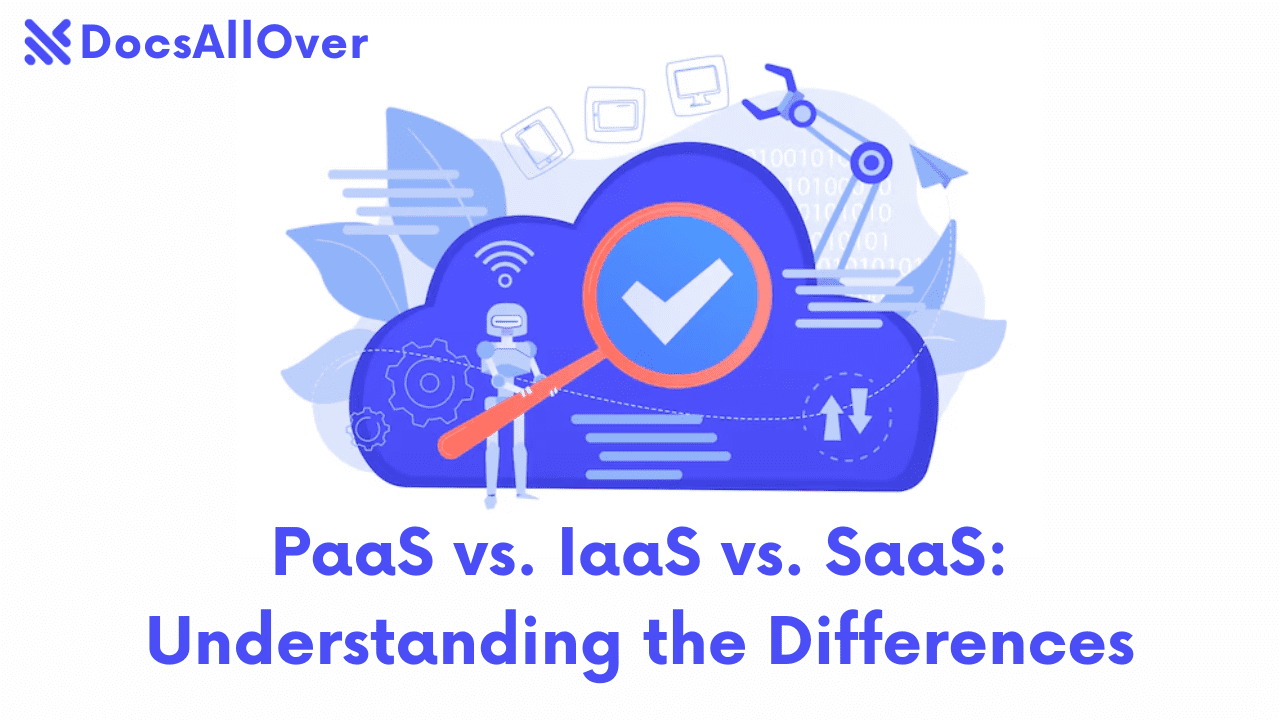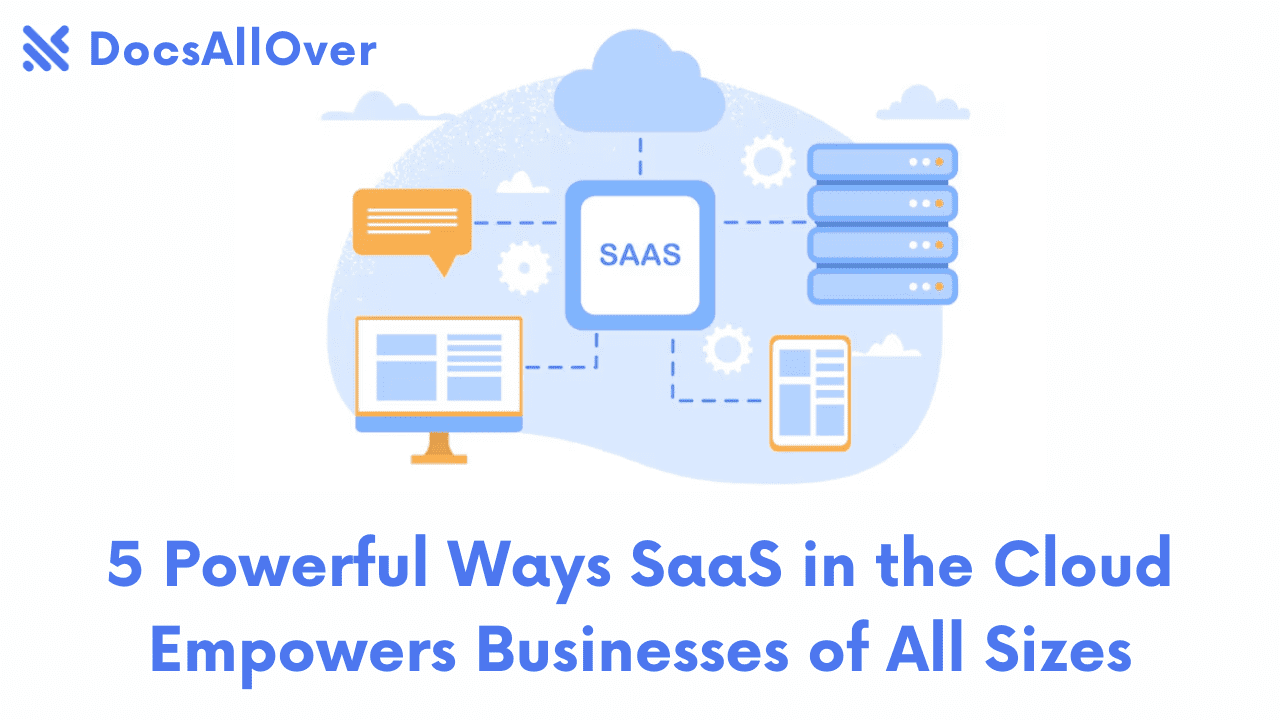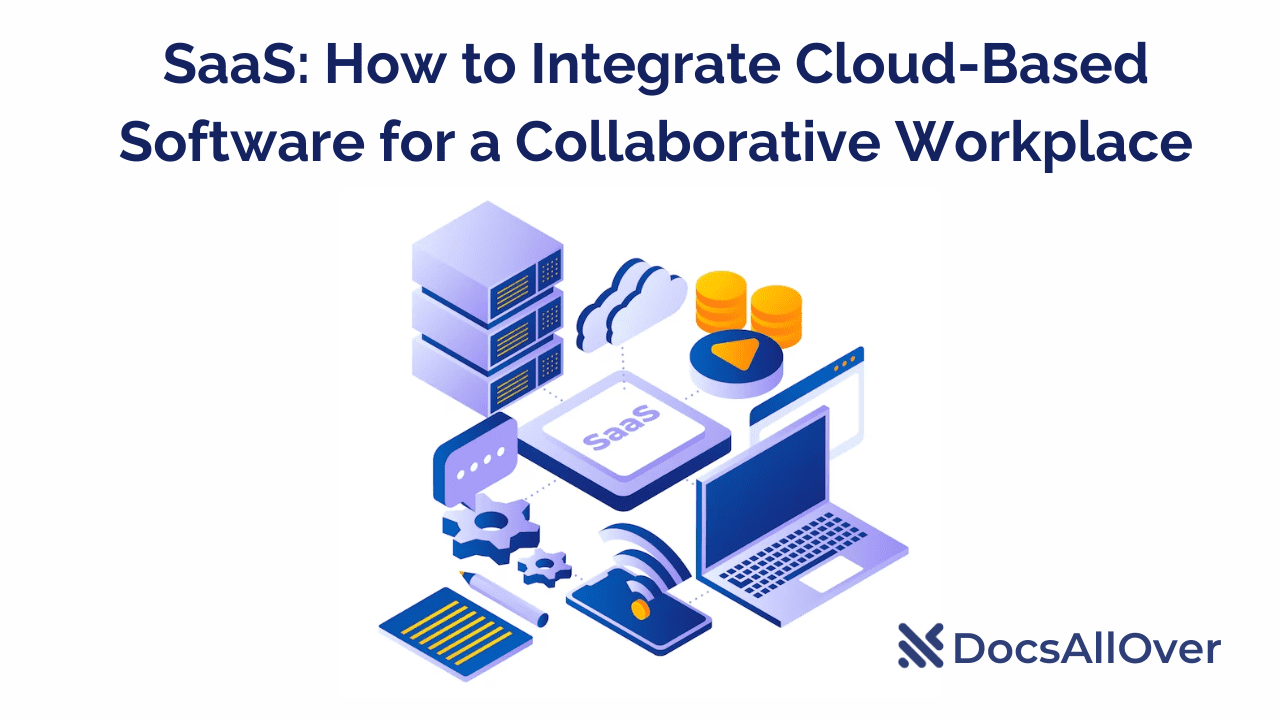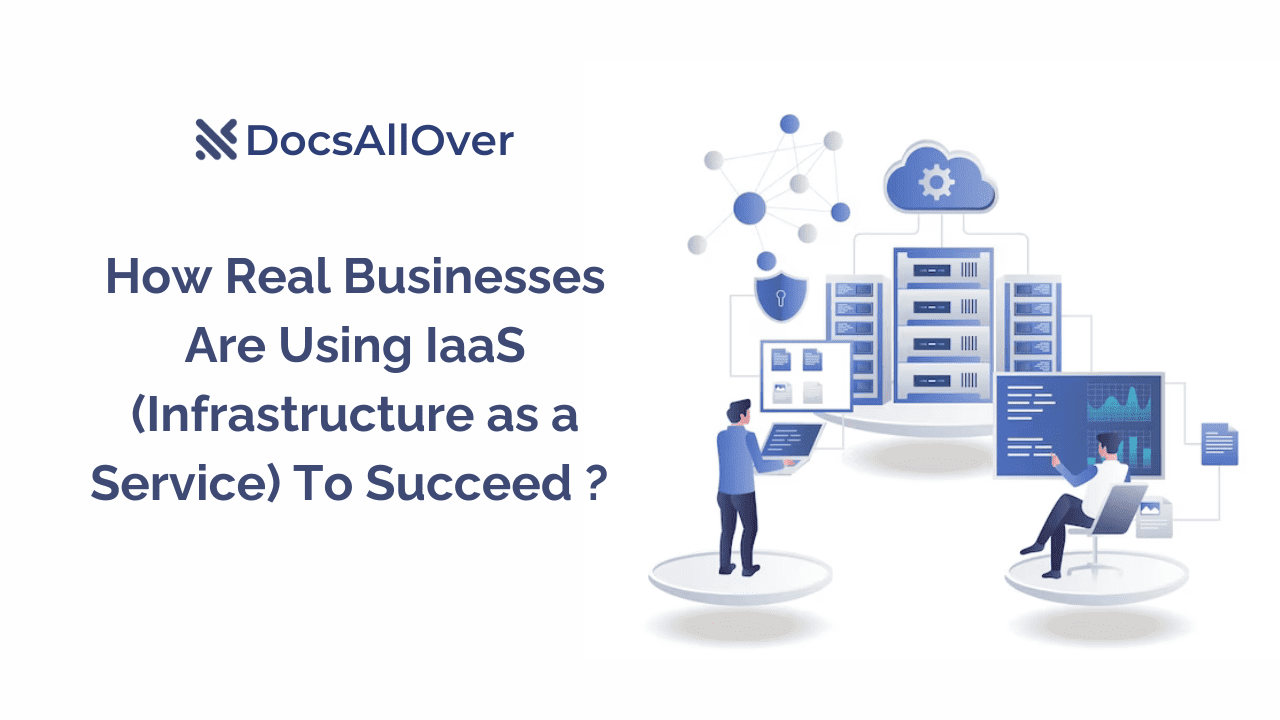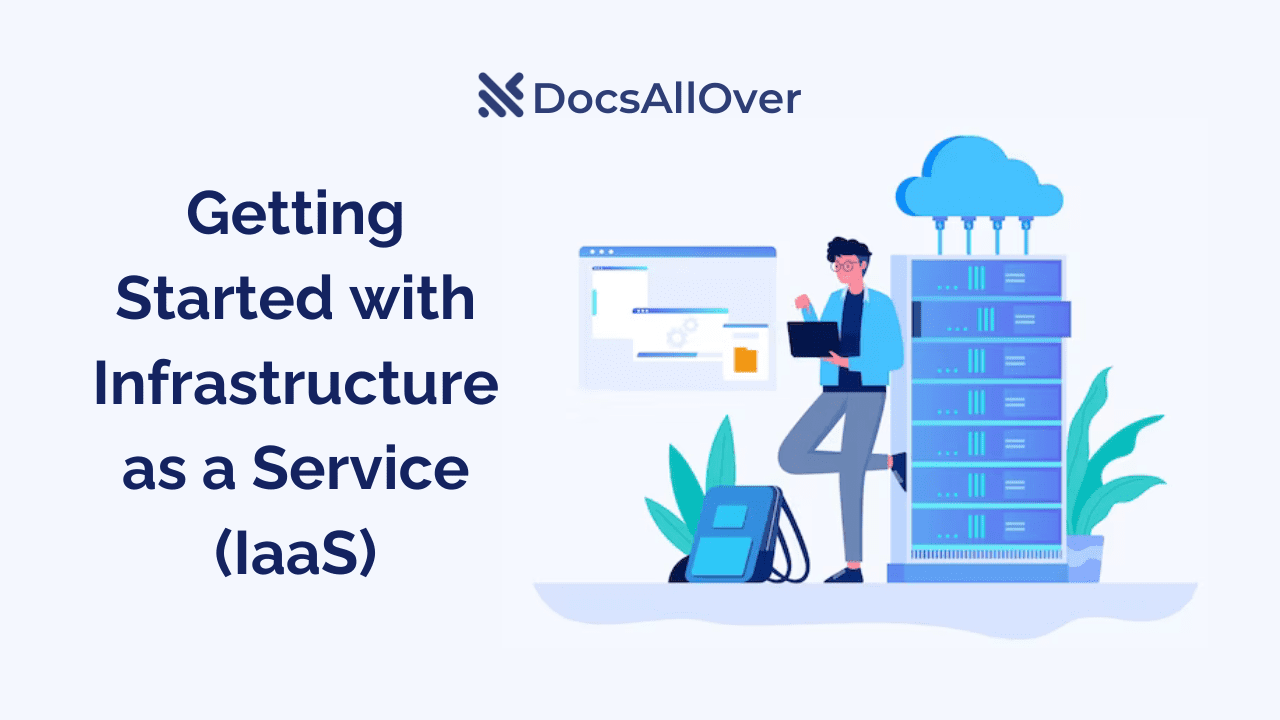Getting Started with Platform as a Service (PaaS)
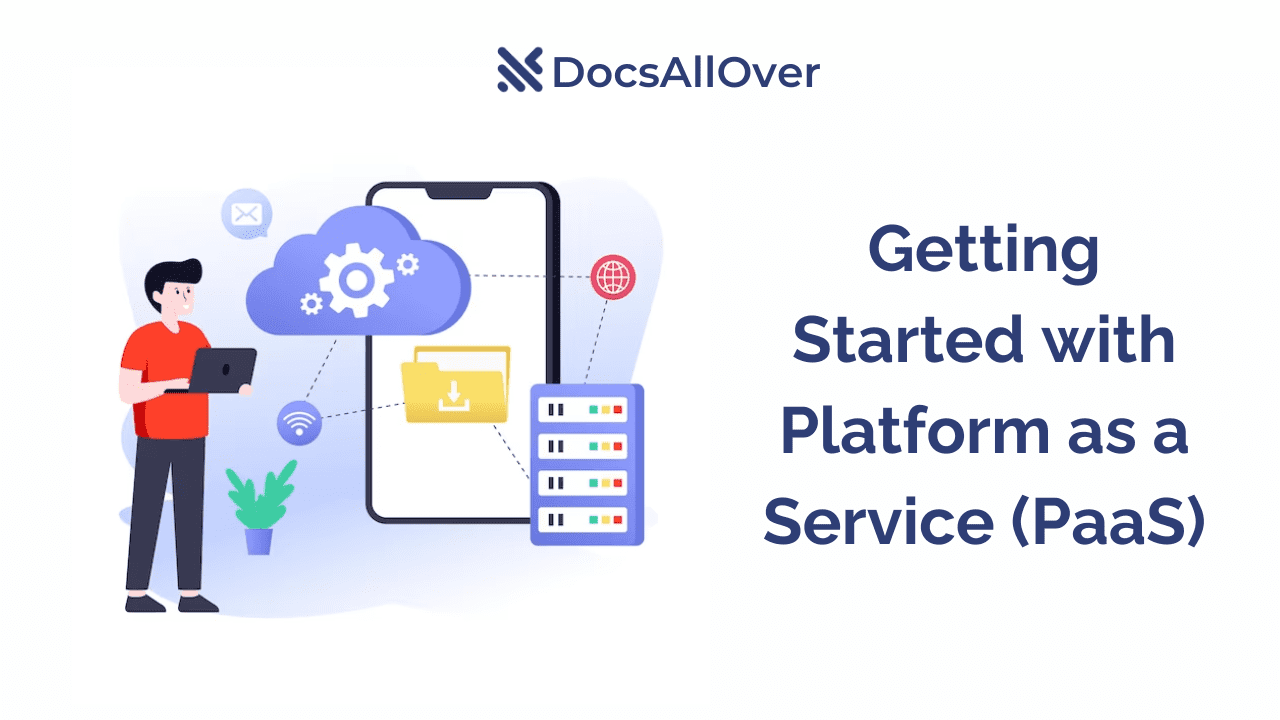
What is PaaS?
Platform as a Service (PaaS) is a cloud computing service model that provides developers with a platform to build, deploy, and manage applications without having to worry about the underlying infrastructure. PaaS providers offer a variety of services, such as compute, storage, networking, databases, and development tools. This allows developers to focus on writing code and leave the rest to the PaaS provider.

PaaS offers a number of benefits, including:
Faster Development and Deployment Cycles
PaaS accelerates the application development process by providing a pre-configured development environment and a range of tools that streamline coding, testing, and deployment. Developers can focus on writing code and innovation, leaving the complexities of infrastructure management to the PaaS provider. This results in faster time-to-market for new applications and the ability to respond quickly to changing market demands.
Seamlessly Adapt to Fluctuating Demands
PaaS applications can automatically scale up or down based on real-time traffic and usage patterns. This ensures that applications can handle spikes in demand without performance degradation or downtime. Businesses can avoid the burden of overprovisioning resources or manually scaling infrastructure, leading to cost savings and optimal resource utilization.
Safeguarding Applications from Cyber Threats
PaaS providers implement robust security measures and compliance standards to protect applications and data from unauthorized access and cyberattacks. These measures include firewalls, intrusion detection/prevention systems, data encryption, and access controls. Businesses can leverage the expertise of PaaS providers to enhance their application security posture and reduce the risk of data breaches.Beanstalk is a fully managed PaaS that makes it easy to deploy and scale applications.
Comparison of PaaS to Other Cloud Computing Service Models (SaaS and IaaS)
| Feature | PaaS | SaaS | IaaS |
|---|---|---|---|
| Focus | Application development and deployment | Software delivery and use | Infrastructure provision and management |
| Control | Developers have control over application logic and configuration | Limited control over application functionality | Full control over hardware and software configuration |
| Scalability | Highly scalable | Less scalable | Scalable, but requires more manual intervention |
| Cost | Pay-as-you-go model | Subscription-based pricing | Pay-as-you-go model |
| Ease of use | Easy to use | Easy to use | Can be complex for non-technical users |
| Target audience | Developers | End users | IT professionals |
10 Advantages of PaaS (Platform as a Service)
1. Reduced development time:
PaaS platforms provide a variety of tools and frameworks that can help developers to write code more quickly and efficiently. For example, some PaaS platforms offer built-in code editors, debuggers, and testing tools.
Example:
A software development company can save weeks or even months of development time by using a PaaS platform to develop and deploy a new application.
2. Improved application performance:
PaaS providers typically use high-performance hardware and software, which can help to improve the performance of applications deployed on their platforms. For example, some PaaS providers offer load balancing and caching services that can help to reduce application latency and improve response times.
Example:
A retail company can use a PaaS platform to deploy its e-commerce website, ensuring that the website can handle a high volume of traffic during peak shopping seasons.
3. Simplified application management:
PaaS platforms can simplify application management by providing tools for monitoring, logging, and troubleshooting applications. For example, some PaaS platforms offer dashboards that allow developers to view real-time application performance metrics and logs.
Example:
A healthcare company can use a PaaS platform to manage its patient records application, ensuring that the application is always up and running and performing optimally.
4. Enhanced developer productivity:
PaaS platforms can enhance developer productivity by providing a variety of tools and features that can make it easier for developers to work together. For example, some PaaS platforms offer code sharing and collaboration tools, as well as continuous integration and continuous delivery (CI/CD) pipelines.
Example:
A team of software developers can use a PaaS platform to develop and deploy a new application more quickly and efficiently by working together on the same codebase and using CI/CD pipelines to automate the deployment process.
5. Reduced risk of vendor lock-in:
PaaS platforms are often built on open standards, which can reduce the risk of vendor lock-in. This means that businesses can easily switch to a different PaaS provider if they are not satisfied with their current provider.
Example:
A financial services company can use a PaaS platform to deploy its core banking application, knowing that it can easily switch to a different provider in the future if necessary.
6. Access to a global network of resources:
PaaS providers often have a global network of data centers, which can provide businesses with access to resources in different regions of the world. This can be helpful for businesses that need to deploy applications that have low latency requirements or that need to comply with data residency regulations.
Example:
A multinational corporation can use a PaaS platform to deploy a global e-commerce application, ensuring that customers in different regions of the world have a fast and reliable online shopping experience.
7. Improved disaster recovery:
PaaS providers often have robust disaster recovery capabilities, which can help businesses to protect their applications from data loss and downtime in the event of a natural disaster or other outage.
Example:
A manufacturing company can use a PaaS platform to deploy its production applications, knowing that its data and applications will be protected in the event of a natural disaster.
8. Reduced compliance costs:
PaaS providers often comply with a wide range of industry regulations, which can help businesses to reduce their compliance costs.
Example:
A healthcare company can use a PaaS platform to deploy its patient records application, knowing that the platform complies with HIPAA regulations.
9. Increased innovation:
PaaS platforms can help businesses to increase innovation by providing them with access to cutting-edge technologies and services. For example, some PaaS providers offer access to artificial intelligence and machine learning services.
Example:
A software company can use a PaaS platform to develop and deploy a new AI-powered application, enabling it to offer new and innovative services to its customers.
10. Improved customer satisfaction:
By reducing development time, improving application performance, and simplifying application management, PaaS can help businesses to improve customer satisfaction.
Example:
A retail company can use a PaaS platform to deploy a new mobile app that is faster, more reliable, and easier to use, leading to increased customer satisfaction and loyalty.
7 Unique Key Features of PaaS
- Scalability: PaaS platforms are highly scalable, allowing developers to quickly and easily add or remove resources as needed. This is particularly important for applications that experience fluctuating traffic or demand.
- Cost-effectiveness: PaaS eliminates the need for businesses to invest in upfront hardware and software purchases, resulting in significant cost savings. Instead, businesses pay for the resources they use on a pay-as-you-go basis.
- Ease of use: PaaS platforms provide a user-friendly interface and pre-configured development environments, making them accessible to developers of all skill levels. This reduces the time and effort required to get started with application development.
- Rapid development and deployment: PaaS platforms streamline the development and deployment process, allowing developers to focus on core application logic rather than infrastructure management. This leads to faster time-to-market for new applications.
- Reduced maintenance overhead: PaaS providers handle infrastructure maintenance tasks, such as patching and updates, freeing up developers to focus on application enhancements and feature development.
- Flexibility and customization: PaaS platforms offer a range of customization options, allowing developers to tailor the environment to suit the specific needs of their applications.
- Security and compliance: PaaS providers implement robust security measures and compliance standards to protect applications and data from unauthorized access and cyberattacks.
How to Choose an PaaS Provider
Choosing a PaaS provider can be a daunting task, as there are many different factors to consider. Here are some key tips to help you choose the right provider for your needs:
- Define your needs: Before you start evaluating providers, it is important to define your specific needs and requirements. This includes considering the type of applications you will be developing, the scalability and performance requirements of your applications, and your budget.
- Research your options: Once you have a good understanding of your needs, you can start researching PaaS providers. There are many different providers to choose from, so it is important to do your research and compare offerings.
- Evaluate features and pricing: When evaluating providers, be sure to compare the features and pricing of each option. Consider factors such as the types of services offered, the scalability of the platform, and the level of support provided.
- Read reviews: Before making a decision, it is a good idea to read reviews of different PaaS providers. This can give you insights into the experiences of other users and help you to identify potential red flags.
- Get demos and trials: Many PaaS providers offer demos and trials, so you can try out their platforms before you commit. This is a great way to get a feel for the platform and see if it is a good fit for your needs.
Popular PaaS Providers and Their Offerings
- Amazon Web Services (AWS) Elastic Beanstalk: AWS Elastic Beanstalk is a fully managed PaaS that makes it easy to deploy and scale applications. It supports a wide range of application types, including web applications, mobile applications, and batch jobs.
- Google Cloud Platform (GCP) App Engine: GCP App Engine is a highly scalable PaaS that is ideal for web applications. It is based on Google's own infrastructure, which means that it is highly performant and reliable.
- Microsoft Azure App Service: Azure App Service is a comprehensive PaaS that offers a wide range of services for developing, deploying, and managing applications. It supports a wide range of application types, including web applications, mobile applications, and APIs.
Tips for Negotiating with PaaS Providers
- Be prepared to walk away: One of the best ways to get a good deal is to be prepared to walk away. This means that you should have a backup plan in case you cannot reach an agreement with your preferred provider.
- Do your research: Before you start negotiating, it is important to do your research and understand the pricing models of different providers. This will help you to know what is a fair price for the services you need.
- Be willing to compromise: Negotiations are a two-way street, so be willing to compromise in order to reach an agreement. This may mean giving up on some of your initial requirements or agreeing to a longer contract term.
- Get everything in writing: Once you have reached an agreement, be sure to get everything in writing. This will help to avoid any misunderstandings down the road.
Choosing the right PaaS provider can be a critical decision for your business. By following these tips, you can increase your chances of selecting the right provider and negotiating a favorable deal.
Getting Started with PaaS
Selecting a PaaS provider requires careful consideration of your business needs, budget, and technical requirements. Here's a step-by-step guide to choosing the right PaaS provider:
- Define Your Requirements: Clearly outline your application requirements, including scalability, performance, security, and compatibility with existing infrastructure.
- Evaluate Provider Options: Research and compare popular PaaS providers such as Amazon Web Services (AWS), Google Cloud Platform (GCP), and Microsoft Azure. Consider their strengths, weaknesses, and pricing models.
- Assess Provider Features: Compare the features offered by each provider, such as development tools, frameworks, databases, and storage options. Ensure they align with your application needs.
- Evaluate Support and Resources: Review the level of support and resources provided by each provider, including documentation, training, and customer support options.
- Test and Proof of Concept: Conduct trial periods or proof-of-concept (PoC) projects to evaluate the performance and suitability of each provider's platform.
- Negotiate Pricing: Engage in discussions with potential providers to negotiate pricing terms, including discounts, volume pricing, and long-term commitments.
- Consider Vendor Lock-in: Assess the potential for vendor lock-in and evaluate the ease of switching providers if necessary.
- Legal and Compliance: Review the provider's legal and compliance terms, ensuring they align with your business's requirements.
- Make an Informed Decision: Based on your evaluation, select the PaaS provider that best meets your business and technical needs.
Implementing PaaS (Platform as a Service) into your business can significantly enhance your application development and deployment process. Here's a comprehensive guide to help you get started with PaaS:
Creating an IaaS Account:
Before diving into PaaS, it's essential to establish an Infrastructure as a Service (IaaS) account. IaaS providers like Amazon Web Services (AWS), Google Cloud Platform (GCP), and Microsoft Azure offer cloud-based infrastructure resources, including computing power, storage, and networking.
To create an IaaS account, you'll need to visit the respective provider's website and sign up for an account. The process typically involves providing your contact information, selecting a pricing plan, and agreeing to the terms of service.
Provisioning PaaS Resources:
Once you have an IaaS account, you can start provisioning PaaS resources. PaaS providers offer a variety of services, such as compute, storage, networking, databases, and development tools.
To provision PaaS resources, you'll need to access the provider's dashboard or console. From there, you can select the services you need and configure the desired parameters, such as instance type, storage size, and network settings.
Managing PaaS Resources:
Effective PaaS resource management is crucial for optimizing application performance and controlling costs. PaaS providers typically offer tools and features for monitoring, scaling, and managing PaaS resources.
Monitoring tools allow you to track resource utilization, identify performance bottlenecks, and proactively address potential issues. Scaling features enable you to dynamically adjust resource allocation based on changing application demands, ensuring efficient resource usage and cost optimization.
Monitoring PaaS Resources:
Continuous monitoring of PaaS resources is essential for maintaining application health and performance. PaaS providers often offer built-in monitoring tools or integrations with third-party monitoring solutions.
These tools provide real-time insights into resource utilization, application performance metrics, and error logs. By closely monitoring these metrics, you can identify potential issues early on and take corrective actions before they impact application availability or performance.
Troubleshooting PaaS Problems:
Despite careful planning and implementation, PaaS issues can arise. To effectively troubleshoot PaaS problems, follow these steps:
- Identify the problem: Clearly define the issue you're encountering, including symptoms, error messages, and affected components.
- Gather information: Collect relevant information, such as logs, configuration files, and monitoring data, to analyze the root cause of the problem.
- Consult documentation: Refer to the provider's documentation, online resources, and community forums for troubleshooting guidance and potential solutions.
- Contact support: If you're unable to resolve the issue on your own, reach out to the provider's technical support team for assistance.
Real-world examples of using PaaS (Platform as a Service) with case studies:
1. Airbnb's Use of AWS Elastic Beanstalk for Scalable and Reliable Web Hosting
Airbnb, the popular online hospitality marketplace, utilizes AWS Elastic Beanstalk to host its web applications. This PaaS solution provides Airbnb with a scalable and reliable platform to handle the ever-increasing traffic and demand for its services. Elastic Beanstalk simplifies the deployment and management of Airbnb's web applications, allowing developers to focus on building innovative features rather than infrastructure management.
Case Study: Airbnb's use of AWS Elastic Beanstalk has enabled the company to:
- Seamlessly scale its web applications to accommodate fluctuations in user traffic.
- Achieve high availability and responsiveness for its global user base.
- Reduce infrastructure management overhead and focus on core business initiatives.
2. Netflix's Adoption of Google App Engine for Agile and Cost-Effective Streaming Platform
Netflix, the leading streaming entertainment service, relies on Google App Engine to power its cloud-based streaming platform. App Engine's flexible and scalable infrastructure enables Netflix to deliver high-quality video content to its millions of subscribers worldwide. The PaaS model reduces Netflix's IT infrastructure costs and allows the company to focus on developing new features and enhancing user experience.
Case Study: Netflix's adoption of Google App Engine has resulted in:
- Significant cost savings due to the pay-as-you-go pricing model of PaaS.
- Improved agility and faster development cycles for new features.
- Enhanced scalability to handle the increasing demand for streaming services.
3. Spotify's Migration to Azure App Service for a Streamlined Development and Deployment Process
Spotify, the popular music streaming service, migrated its backend infrastructure to Azure App Service, a PaaS solution offered by Microsoft. This migration streamlined Spotify's development and deployment process, enabling the company to release new features and updates more frequently. App Service's managed infrastructure and continuous integration/continuous delivery (CI/CD) capabilities have significantly reduced Spotify's development time and improved its overall efficiency.
Case Study: Spotify's migration to Azure App Service has led to:
- Faster time to market for new features and updates.
- Reduced development time and improved developer productivity.
- Enhanced scalability and reliability of the music streaming platform.
These real-world examples demonstrate the diverse applications of PaaS in various industries. Businesses across various sectors are leveraging PaaS solutions to achieve their cloud computing goals, including scalability, cost-effectiveness, agility, and innovation.
Common Use Cases for PaaS (Platform as a Service):
- Web Application Development and Deployment: PaaS provides a comprehensive platform for developing, deploying, and managing web applications. It offers a range of services, including compute, storage, networking, databases, and development tools, that simplify the application lifecycle and reduce the burden on developers. PaaS is particularly well-suited for companies that want to build and deploy web applications quickly and efficiently.
- Mobile Application Development: PaaS can also be used to develop and deploy mobile applications. It provides a streamlined development environment and tools for cross-platform development, enabling developers to create mobile applications that can run on various devices and operating systems.
- API Development and Management: PaaS can facilitate the development and management of APIs (Application Programming Interfaces). It provides a platform for creating, publishing, and managing APIs, as well as tools for API testing and monitoring. PaaS can help businesses expose their data and services to other applications and partners in a secure and controlled manner.
- Internet of Things (IoT) Applications: PaaS is a suitable platform for developing and managing IoT applications. It provides the necessary infrastructure and services to connect and manage large numbers of IoT devices, collect and process data from those devices, and analyze and visualize the data to gain insights and make informed decisions.
- Agile Development and DevOps: PaaS supports agile development and DevOps methodologies by providing a platform for continuous integration (CI) and continuous delivery (CD). CI/CD pipelines automate the process of building, testing, and deploying applications, enabling faster release cycles and improved software quality.
- Business Intelligence and Analytics: PaaS can be used to develop and deploy business intelligence (BI) and analytics applications. It provides the necessary infrastructure and services to collect, store, and analyze large datasets, enabling businesses to gain insights into their operations and make informed decisions.
- Data Warehousing and Data Lakes: PaaS can be used to create and manage data warehouses and data lakes. It provides the necessary infrastructure and services to store, manage, and process large volumes of data, enabling businesses to perform complex data analysis and extract valuable insights.
- Machine Learning and Artificial Intelligence (AI): PaaS can be used to develop and deploy machine learning and AI applications. It provides the necessary infrastructure and services to train, deploy, and manage machine learning models, enabling businesses to automate tasks, improve decision-making, and gain competitive advantage.
These are just a few examples of the many use cases for PaaS. As cloud computing continues to evolve, PaaS is likely to become even more widely adopted as businesses seek to develop and deploy applications more quickly, efficiently, and cost-effectively.

